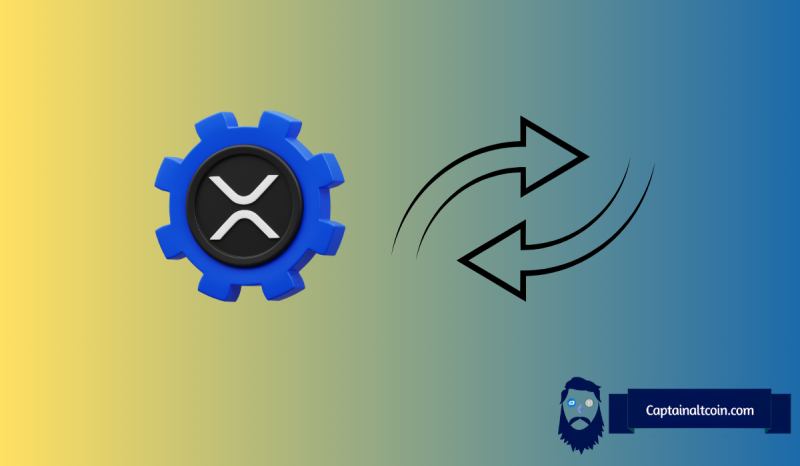 |
|
 |
|
 |
|
 |
|
 |
|
 |
|
 |
|
 |
|
 |
|
 |
|
 |
|
 |
|
 |
|
 |
|
 |
|
Cryptocurrency News Articles
Solar-Powered Hydrogen Production Is Now a Reality, Thanks to This New Electrochemical Process
Nov 19, 2024 at 01:46 am
Notably, creating clean energy can be a difficult task that, in some scenarios, heavily reduces the advantage of using it in the first place.

Solar-powered hydrogen production has been a goal of engineers for decades, but the task has proven expensive and very difficult to complete, causing the science to fall behind other ways to produce green energy, such as solar and geothermal options.
This month marks a major development in this research as a team of engineers based out of the EU introduced an electrochemical plastic recycling process that produces hydrogen as a clean byproduct. Here's what you need to know
Notably, creating clean energy can be a difficult task that, in some scenarios, heavily reduces the advantage of using it in the first place. Systems like solar panels and wind farms can cost a lot to set up, monitor, and maintain. Additionally, they require lots of space and often rely on older manufacturing methods that aren't green to produce. This research seeks to transform this paradigm, keeping the production methods and strategies in line with the overall goal of achieving clean energy.
Plastic Waste
Levels of plastic waste have hit historic proportions globally. Already in 2024, analysts predict 220M tonnes of plastic waste will be produced. Sadly, only around 10% of this waste will ever make it to a recycling plant. Consequently, the remaining 90% of waste sits in landfills, waterways, and on city streets.
Could Get Worse
According to environmentalists and researchers, the plastic waste dilemma is only going to get worse in the coming years. For one, every year provides improved production capacity, resulting in more use and waste.
Plastic Dangers Intensify
Over time, plastic breaks down into harmful byproducts that can result in health issues like cancer and antibiotic resistance, in addition to the obvious environmental impacts. Tiny plastic pollutants have been found in the food chain.
Notably, a large portion of this plastic waste includes polystyrene, which is the product that engineers targeted for their carbon recycling strategy that led them to the solar-powered hydrogen production strategy.
Carbon Recycling Seeks to Reduce Waste
There are currently many different recycling methods available to help reduce waste. One of the most celebrated and effective is carbon recycling. This strategy revolves around breaking down waste and using it to create new materials that can then be used in other manufacturing processes.
The goal of carbon recycling is to eliminate waste one day by transforming useless plastic waste and giving it new life in the form of early-stage industrial material. Here are the most common types of carbon recycling in use today.
Electrochemical Degradation
Electrochemical degradation uses a mix of certain chemicals and varying electrical charges to separate and create new chemical bonds within the waste plastic. This method requires a lot of electricity to successfully break down the chemical bonds and leave smaller, more useful molecules.
Biodegradation
Biodegradation is another form of carbon recycling that has grown in popularity over the last few years. This method incorporates living organisms like fungi and bacteria. These microorganisms feed off plastic waste on a molecular level which releases the carbon and oxygen molecules.
This approach has the advantage of not requiring massive amounts of electricity or dangerous chemicals. However, it can be slow, and there is no way to fully determine how long the breakdown process will take as environmental conditions and other factors could affect the microorganism's performance.
Thermal Decomposition
Thermal decomposition utilizes heat to break down the molecular bonds and free up carbon molecules using a process called pyrolysis. This method generates heat, steam, and electricity, which can be used to offset manufacturing requirements. Thermal decomposition provides low emissions, reduces air pollutants, and can produce bio-oil, carbon fibers, and many other valuable products.
Hydrogen from Solar Panels Study
This month a team of engineers from Friedrich Wöhler Research Institute for Sustainable Chemistry in Göttingen published a study in the journal Angewandte Chemie, detailing a new electrochemical process that requires minimal energy and doesn't produce any harmful byproducts.
The method relies on a process known as Iron electrocatalysis, which stimulates the materials and aids in degradation. The study specifically reviews using an electrocatalytic method to provide a more efficient degradation of polystyrenes. The engineers successfully proved that converting waste plastic into industrial material like monomeric benzoyl products was possible, creating hydrogen as a bi-product along the way.
Test
The testing began with engineers attempting to convert plastic waste on a gram scale. Specifically, the team created an iron porphyrin complex that could cycle between different oxidation steps, enhancing the polystyrene degradation process.
Results
The testing proved that the researchers could successfully create hydrogen using this method alongside a host of other helpful industrial materials, such as benzoic acid, which is found in many preservatives, and benzaldehyde. Notably, they had not set out to produce hydrogen at all but rather to showcase the efficiency of their low-energy carbon recycling method.
Benefits
There are a lot of different benefits that this research brings to the markets. For one, the process is entirely Iron-based. Iron isn't rare and can be found all over the world. This readily available ingredient is easy to obtain, inexpensive, and available in mass quantities.
I
Disclaimer:info@kdj.com
The information provided is not trading advice. kdj.com does not assume any responsibility for any investments made based on the information provided in this article. Cryptocurrencies are highly volatile and it is highly recommended that you invest with caution after thorough research!
If you believe that the content used on this website infringes your copyright, please contact us immediately (info@kdj.com) and we will delete it promptly.
-

-

- XRP Price Prediction for Today (March 16) as Ripple Whales Go on a Buying Spree
- Mar 16, 2025 at 09:25 pm
- The XRP price has had a pretty slow weekend as it's down 1.2% in the last 24 hours, now trading at $2.37. However, when we look at the weekly timeframe, XRP actually had a much better week than other major altcoins.
-

-

- XRP Price Could Rise by Substantial Margins If It Reacts Favorably to the Upcoming Settlement Between the U.S. SEC and Ripple
- Mar 16, 2025 at 08:50 pm
- After more than four years of litigation, the U.S. Securities and Exchange Commission (SEC) may soon dismiss its lawsuit against Ripple, according to recent disclosures.
-

-

-

-

- Prominent American angel investor Jason Calacanis is convinced that the Ripple-linked XRP cryptocurrency is controlled just by "a few individuals."
- Mar 16, 2025 at 08:45 pm
- Earlier, Calacanis argued that XRP was a "centralized controlled security," which is the opposite of Bitcoin. He predicted that there would be "chaos" if the SEC ended up approving XRP-based ETF products.
-






























































